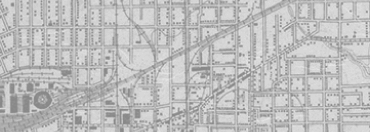


Back
Photograph of courtroom sketch of Bill Alexander in final argument of Ruby trial
Photograph of courtroom pencil sketch on paper by CBS News courtroom artist Howard Brodie. The sketch shows Assistant District Attorney Bill Alexander during the Jack Ruby trial on March 13, 1964. The sketch shows Alexander speaking directly to the jury while he gestures with both hands. A handwritten caption along the bottom edge of the image reads "Alexander for DA / 3/13/1964 / final argument to jury."Brodie made the original pencil sketches for CBS News during the trial of Jack Ruby after the judge barred cameras from the courtroom. Brodie then gave Joe Tonahill this photograph of a courtroom sketch as part of a collection of more than 40 in 1964.
Photograph of courtroom sketch of Bill Alexander in final argument of Ruby trial
03/13/1964
Paper, Adhesive tape
14 5/8 × 19 1/4 in. (37.1 × 48.9 cm)
Tonahill Family Partners Collection/The Sixth Floor Museum at Dealey Plaza
2014.034.0010
Howard Brodie (1915-2010) was a sports artist for the San Francisco Chronicle when he enlisted in the U.S. Army with America's entry into World War II. He ultimately became one of the best-known sketch artists of the war, frequently published in the weekly U.S. military magazine, Yank, which ran from June 1942 to December 1945. After the war, Brodie spent the next thirty-five years as a courtroom artist, attending several notable trials including the Chicago Seven, Charles Manson and, of course, the Jack Ruby trial in 1964. For the Ruby trial, Brodie worked as a CBS-TV artist correspondent. Mr. Brodie recorded an oral history with the Museum in 2006. -- Stephen Fagin, Curator
William F. "Bill" Alexander (1920-2015) became an assistant Dallas district attorney in 1952 and tried about sixty murder cases, prosecuted gamblers, and managed special grand jury investigations before rising to national prominence with the Jack Ruby trial in 1964. After leaving the D.A.'s office, Alexander went on to have a long career as a defense attorney and as an assistant U.S. attorney. Although reluctant to talk about his involvement in the Kennedy assassination and Ruby trial, Alexander gave a few notable interviews over the years, including an oral history published in Larry Sneed's 1998 book, No More Silence. -- Stephen Fagin, Curator
Photograph of courtroom sketch of Bill Alexander in final argument of Ruby trial
Photograph of courtroom pencil sketch on paper by CBS News courtroom artist Howard Brodie. The sketch shows Assistant District Attorney Bill Alexander during the Jack Ruby trial on March 13, 1964. The sketch shows Alexander speaking directly to the jury while he gestures with both hands. A handwritten caption along the bottom edge of the image reads "Alexander for DA / 3/13/1964 / final argument to jury."Brodie made the original pencil sketches for CBS News during the trial of Jack Ruby after the judge barred cameras from the courtroom. Brodie then gave Joe Tonahill this photograph of a courtroom sketch as part of a collection of more than 40 in 1964.
Photograph of courtroom sketch of Bill Alexander in final argument of Ruby trial
03/13/1964
Photographs
Jack Ruby trial
Sketches
Attorney
Trials
Jury
Brodie, Howard
Alexander, William F.
CBS News
Paper, Adhesive tape
14 5/8 × 19 1/4 in. (37.1 × 48.9 cm)
Tonahill Family Partners Collection/The Sixth Floor Museum at Dealey Plaza
2014.034.0010
Howard Brodie (1915-2010) was a sports artist for the San Francisco Chronicle when he enlisted in the U.S. Army with America's entry into World War II. He ultimately became one of the best-known sketch artists of the war, frequently published in the weekly U.S. military magazine, Yank, which ran from June 1942 to December 1945. After the war, Brodie spent the next thirty-five years as a courtroom artist, attending several notable trials including the Chicago Seven, Charles Manson and, of course, the Jack Ruby trial in 1964. For the Ruby trial, Brodie worked as a CBS-TV artist correspondent. Mr. Brodie recorded an oral history with the Museum in 2006. -- Stephen Fagin, Curator
William F. "Bill" Alexander (1920-2015) became an assistant Dallas district attorney in 1952 and tried about sixty murder cases, prosecuted gamblers, and managed special grand jury investigations before rising to national prominence with the Jack Ruby trial in 1964. After leaving the D.A.'s office, Alexander went on to have a long career as a defense attorney and as an assistant U.S. attorney. Although reluctant to talk about his involvement in the Kennedy assassination and Ruby trial, Alexander gave a few notable interviews over the years, including an oral history published in Larry Sneed's 1998 book, No More Silence. -- Stephen Fagin, Curator









